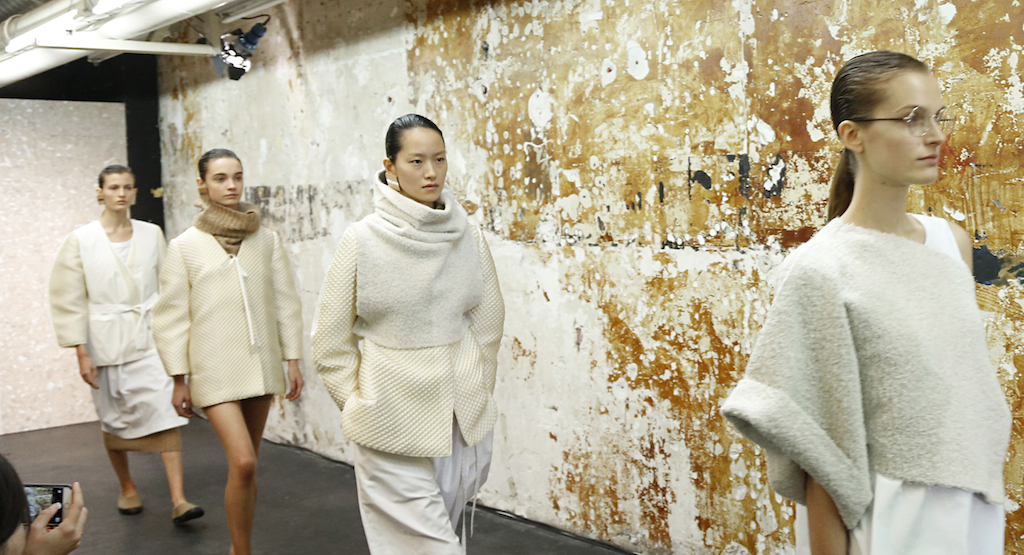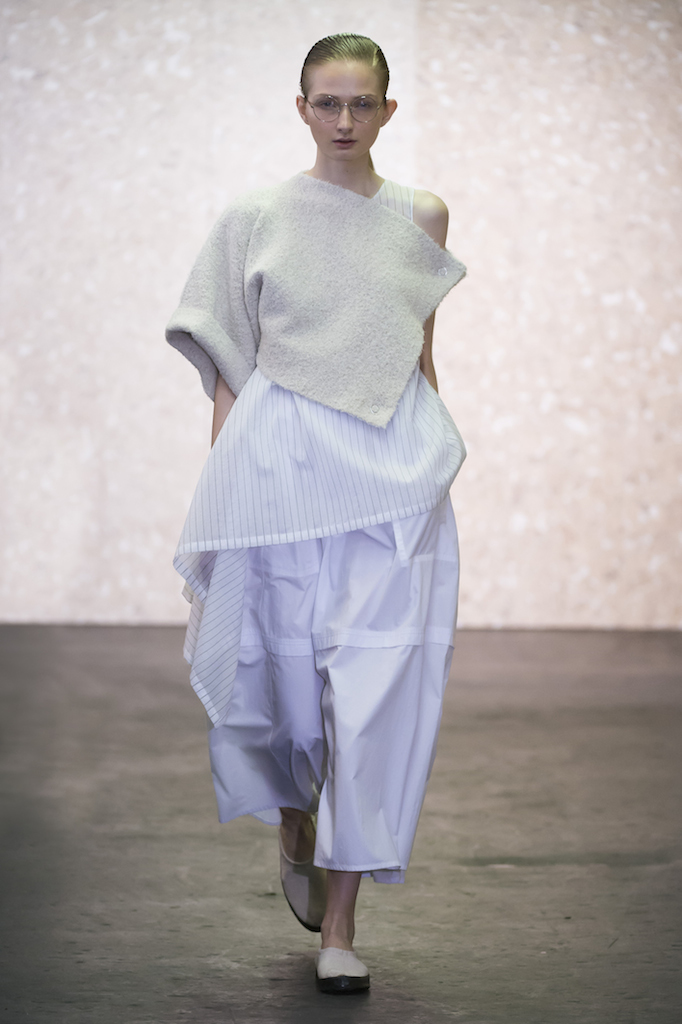Founded by Czechoslovakian entrepreneur Jan Nehera in the 1930s, the house of Nehera spawned over 130 retail stores throughout Europe before WWII brought the garment empire to an abrupt stop. Some seventy years later Prague native and marketing specialist Ladislav Zdut acquired Nehera with the vision of relaunching it as a luxury brand.
During S/S15 Paris fashion week Nehera debuted with creative director Samuel Drira at the helm. Zdut had carefully followed Drira’s career at houses such as Hermès and The Row and his art fashion publication, Encens Magazine. As Nehera unveils its A/W 16 collection at Paris Fashion Week i-D caught up with designer Samuel Drira to discuss fashion legacies, the mission of Nehera and the wisdom of his friend Rick Owens.

What was your awareness of the Nehera brand prior to joining the house?
The brand was a pioneer in ready-to-wear in the 30s. Jan Nehera founded the brand and made it global in a very short amount of time. Obviously one and a half year ago I didn’t know much about it, since it was not as visible as it is today.
Has it been a luxury to revive a house with so much history, albeit under the radar history, without facing the same pressures as coming into a Saint Laurent or Celine?
There’s not so much remaining from the past of Nehera, it’s not like I was dealing with archives of the house or a codified environment. From what is left, I got intrigued early on by an advertising image from the thirties showing a woman getting off a plane and wearing a garment suitable for taking off, long hours sitting and keeping its shape the entire journey. The accent on Nehera today is still functional, but we try to portray the lifestyle of the woman who is wearing the clothes and the infinite combinations generated through simple and familiar pieces like the blazer, the shirt, the t-shirt.

Several collections in do you feel connected to the customers and women who wear the brand?
Thinking about a woman who wears the clothes as a customer can be very restrictive. Of course you cannot ignore that when it’s about clothes there are needs to fulfil, but my approach is more a questioning process. Our main focus at Nehera is always on wearability and creating someone’s own persona. Women must feel comfortable to feel good. There’s a purpose in every piece we do, each garment has its own craftsmanship and is somehow an analysis on the way someone will move and how the garment will be reflected by the body language. Thus when I think of our customer I think of more than just a specific woman.

How important are the shows when debuting a brand? TheNehera shows are so specific and beautiful.
Well, a show is very important for a brand—especially an emerging and independent one like Nehera. In Paris you are surrounded by very important names so you cannot simply just send a bunch of clothes down the catwalk—you need to have something to say, a point of view. You need to be different. A Nehera show is always built on an atmosphere that showcases the brand. Once you match the collection, models, place, hair, make-up, music and environment you can really present something as a whole that can resonate with the audience. I couldn’t do my work the way I do it if it wasn’t punctuated by this moment. Rick Owens once told me that “fashion is about hope.” I believe this is exactly what a show is meant to be.
Very true. I know you spend time between Paris and Bratislava, is your time in Paris spent on Encens and in Bratislava on Nehera?
Yes, correct. Even though sometimes it has to overlap, I focus mostly on Nehera while working in Bratislava. Nehera showcases four collections a year in Paris. That’s why it’s often complicated to split time between Encens and Nehera, but you have to understand both projects are my passion and I have no problem with being a slightly schizophrenic.

Let’s talk about Encens; what are the ethos behind the publication, is it still primarily just you and Sybille at the helm?
Sybille Walter and I decided to make it happen more than ten years ago, although it was initially meant to be a one-time project. The very first stage of Encens was somehow an act of rebellion. Around 2002 I felt I couldn’t breath the fashion as it was then, thus I decided to put together all my references and icons in a magazine.
Do you think about the future much?
Nehera’s rebirth is a completely new thing. My job is not just creating the collection but also to think what will happen in the next year, the next seasons. My task is always to bring a new chapter of the story we started elaborating a few seasons ago. Our first collection was called “Blank Canvas”; it was a synonym of a clean slate, of a persona we wanted to showcase.
Nehera is stocked locally @shiftingworlds
Credits
Text Courtney DeWitt
Photography courtesy of Nehera